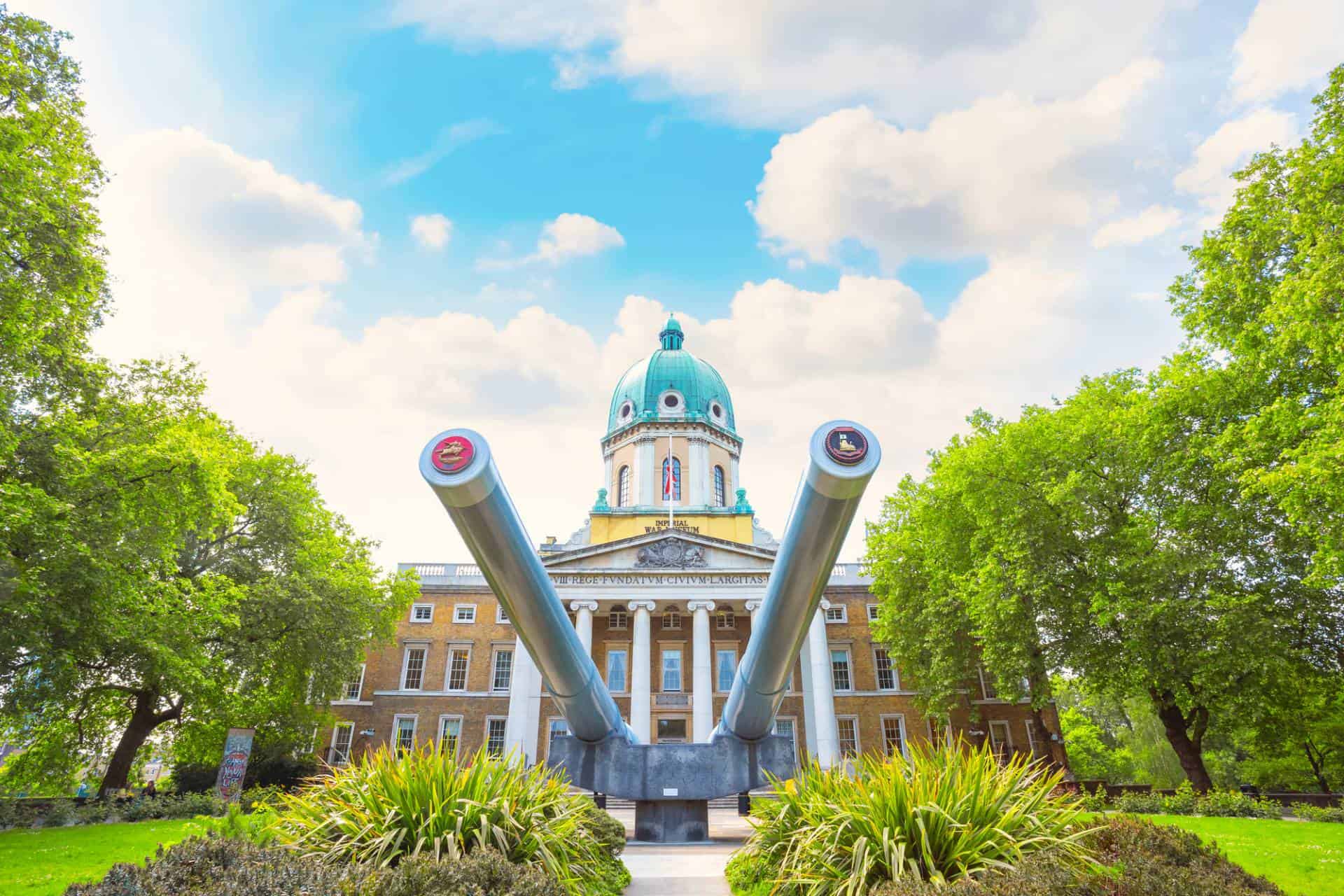
Memorial: Battle of Normandy
Europe is home to several important war museums, each providing a unique perspective on various conflicts throughout history. Here are some of the more significant ones:
- Imperial War Museum (London, UK): This museum covers conflicts involving Britain and the Commonwealth from World War I to the present day. It holds an extensive collection of military artifacts, documents, and personal stories.
- Museum of the Great Patriotic War (Moscow, Russia): Located in Victory Park, this museum is dedicated to the Soviet Union's experience in World War II, known as the Great Patriotic War. It houses an extensive collection of wartime artifacts, including weapons, uniforms, and photographs.
- Anne Frank House (Amsterdam, Netherlands): This museum is located in the actual house where Anne Frank and her family hid from the Nazis during World War II. It offers a poignant and powerful insight into the experiences of Jewish families in hiding.
- German Military History Museum (Dresden, Germany): This museum provides a comprehensive view of German military history from the Middle Ages to the present. It offers a critical examination of Germany's military past and its implications for the present.
- Normandy American Cemetery and Memorial (Normandy, France): Situated near Omaha Beach, this cemetery is a powerful tribute to the American soldiers who lost their lives during the D-Day landings of World War II.
- Warsaw Uprising Museum (Warsaw, Poland): This museum commemorates the 1944 Warsaw Uprising against Nazi occupation. It features exhibits that provide a detailed account of the struggle for liberation.
- Auschwitz-Birkenau State Museum (Oświęcim, Poland): Located at the site of the Auschwitz concentration and extermination camps, this museum serves as a memorial to the victims of the Holocaust and provides a stark reminder of the atrocities committed during World War II.
- Verdun Memorial (Verdun, France): This museum is dedicated to the Battle of Verdun during World War I, one of the longest and most brutal battles in history. It offers a comprehensive view of the conflict and its impact.
- National Museum of Military History (Diekirch, Luxembourg): Focusing on the Battle of the Bulge during World War II, this museum showcases the military history of Luxembourg and the role it played in the war.
- Museum of the Second World War (Gdańsk, Poland): This museum offers a detailed narrative of World War II, with a particular emphasis on the experiences of civilians.
These museums serve as important educational resources, providing visitors with a deeper understanding of the impact and significance of various wars and conflicts in European history.
Europe, with its complex history of conflict, hosts some of the most significant war museums that offer immersive experiences into the tumultuous periods of the First and Second World Wars, among other conflicts. The Imperial War Museum (IWM) in London is a leading example, encompassing a network of galleries that delve into the intricacies of the Great War, the war effort during the Second World War, and subsequent military engagements. The IWM provides a comprehensive narrative, not only through traditional exhibits but also through personal stories and artifacts that highlight the human aspects of war. It's a poignant reminder of the roles individuals and communities played in the war and the impact it had on them.
Adjacent to the IWM, the Churchill War Rooms take visitors on a journey back to the heart of Britain’s operation overload during the Second World War. The war rooms, preserved almost exactly as they were during Churchill's time, offer a glimpse into the underground bunker that protected the staff and secrets at the heart of Britain’s government during the war. This museum uniquely combines historical preservation with educational storytelling, making it a must-visit for those looking to understand the strategic operations that took place behind the scenes.
In France, the Memorial Museum of the Battle of Normandy in Caen provides an extensive overview of Operation Overlord, the codename for the Battle of Normandy that began on D-Day, June 6, 1944. This museum not only covers the military strategies and tactics employed during one of the pivotal moments of the Second World War but also pays homage to the soldiers who fought and lost their lives. The museum's exhibits and the nearby Normandy American Cemetery emphasize the scale of the Allied forces' part in the war and the significant sacrifices made.
Additionally, the Army Museum in Paris and the Royal Air Force Museum in London highlight the technological advancements and the critical role of military equipment and aviation in the outcomes of the two world wars. These museums offer detailed insights into the evolution of warfare, from infantry arms to the development of aircraft that played a crucial part in the war effort. The HMS Belfast, moored on the River Thames in London, serves as a floating museum, allowing visitors to explore one of the most powerful large light cruisers that played a key role in naval operations during the Second World War.
These important war museums across Europe serve as custodians of memory, ensuring that future generations understand the complexities of war, the strategies employed, and the human cost of conflict. Through their collections, exhibits, and educational programs, they preserve the legacy of those who participated in and were affected by war, fostering a deeper appreciation for peace and the sacrifices made for it.










